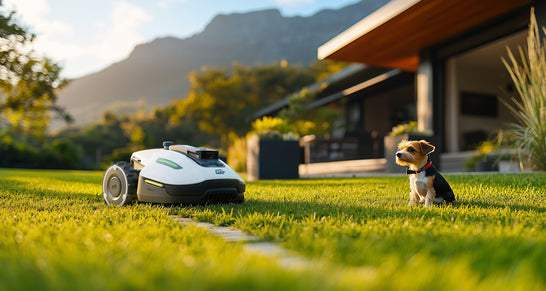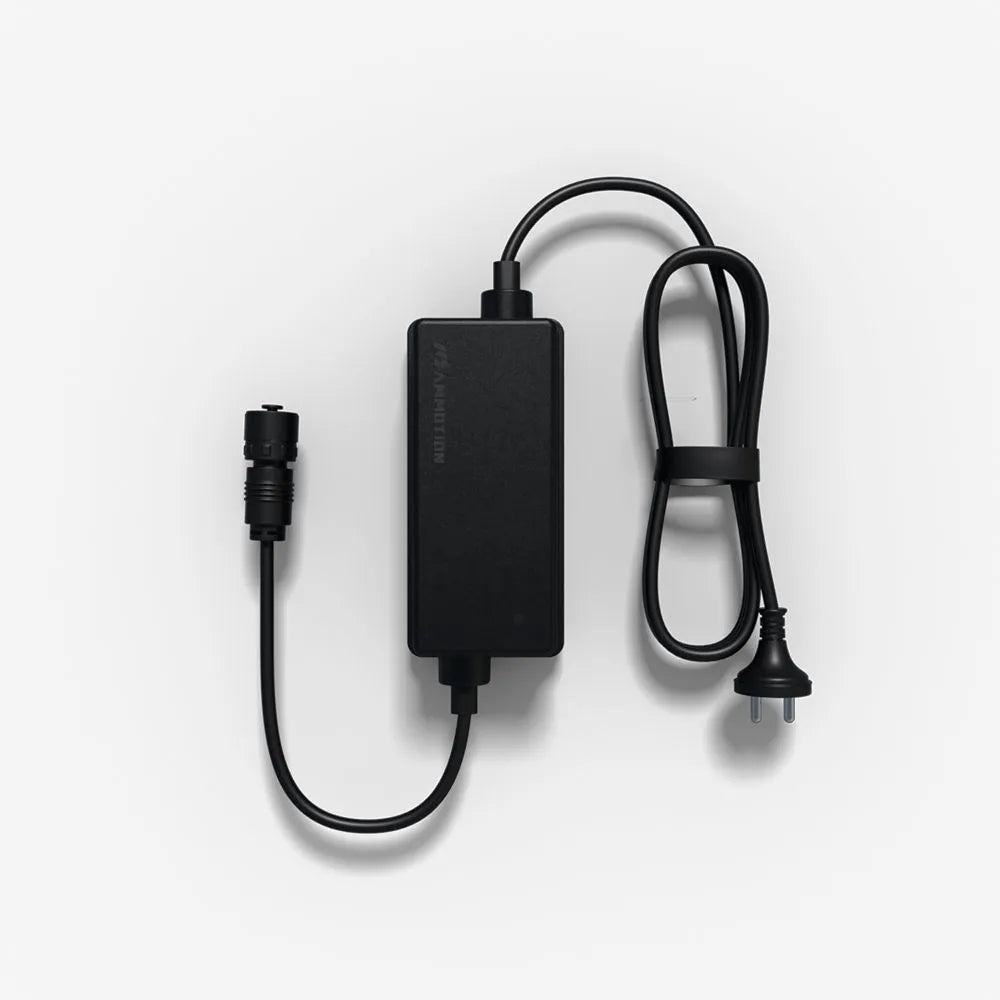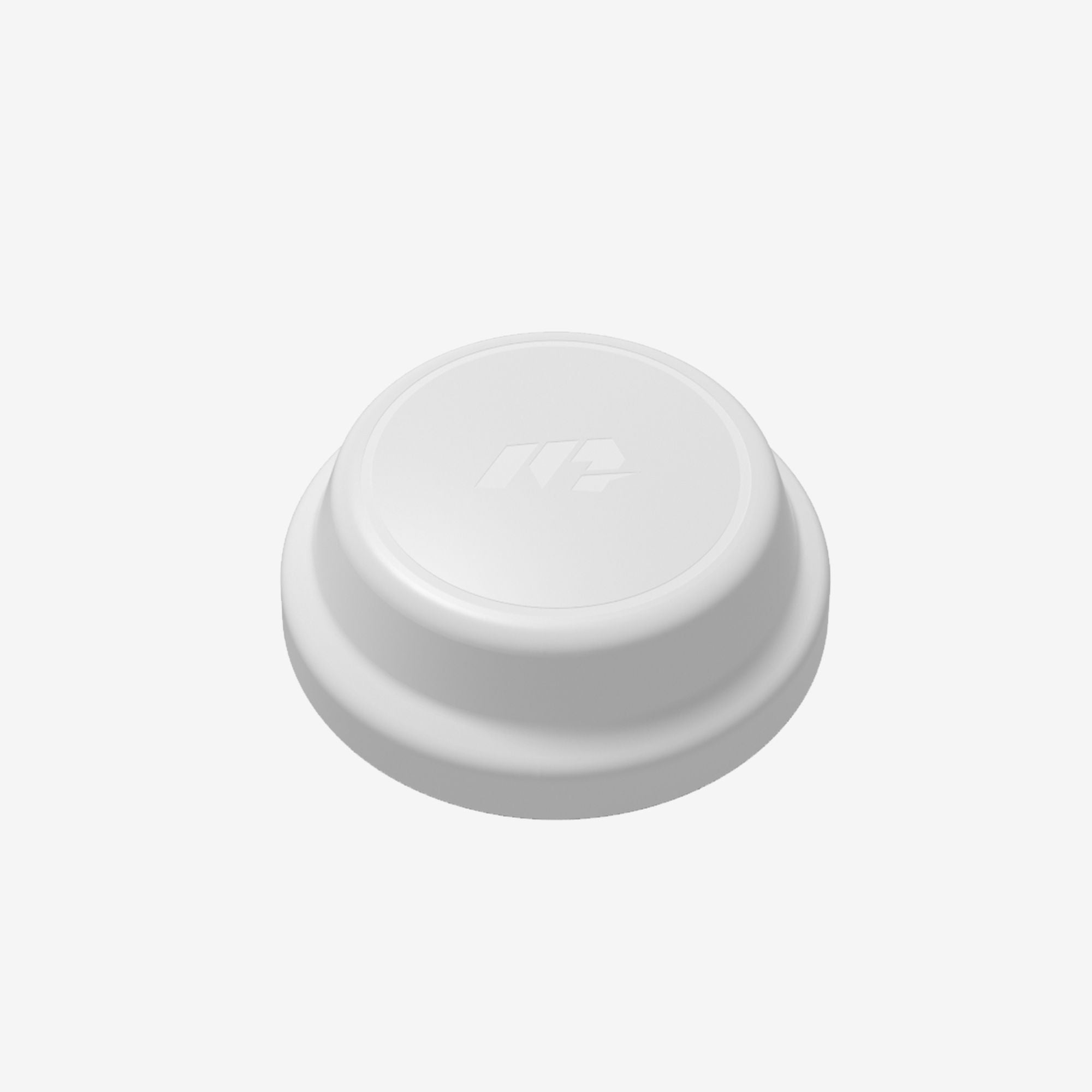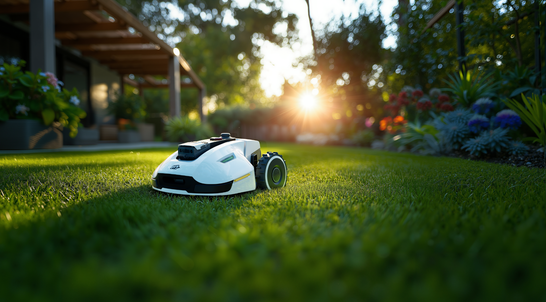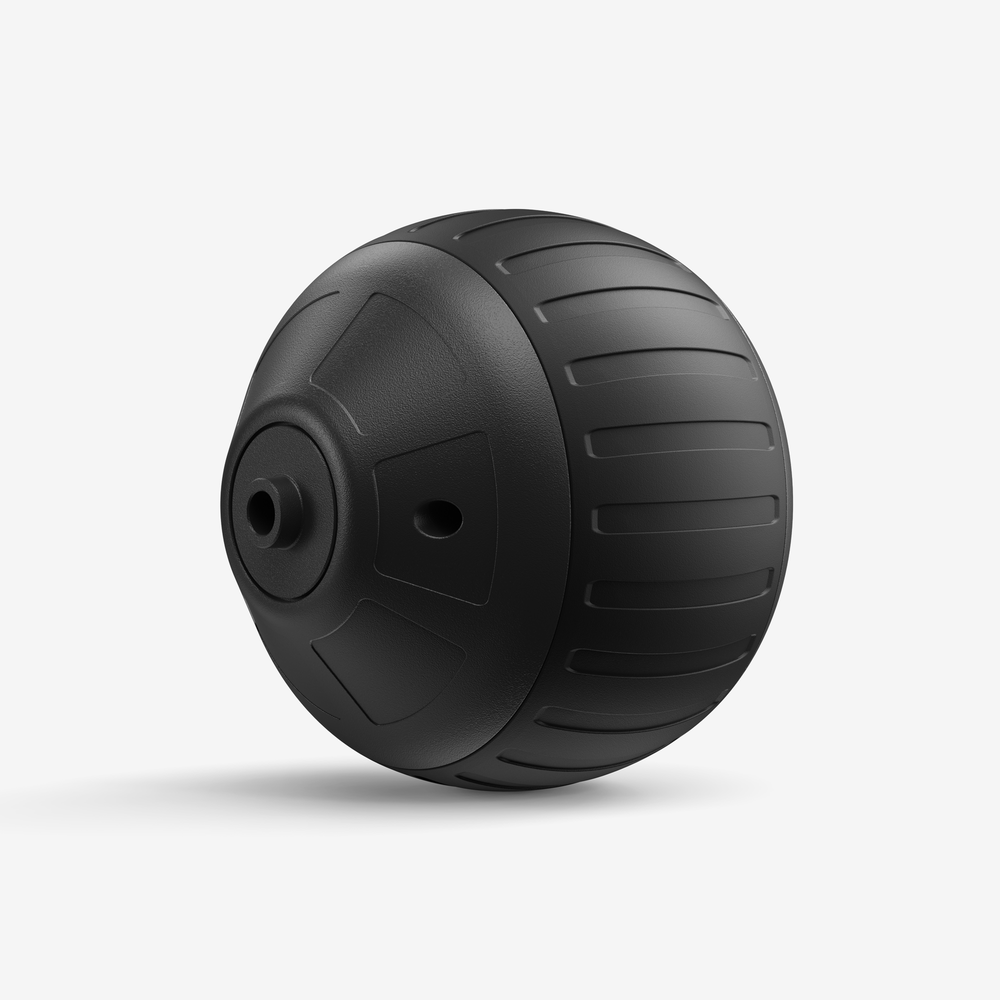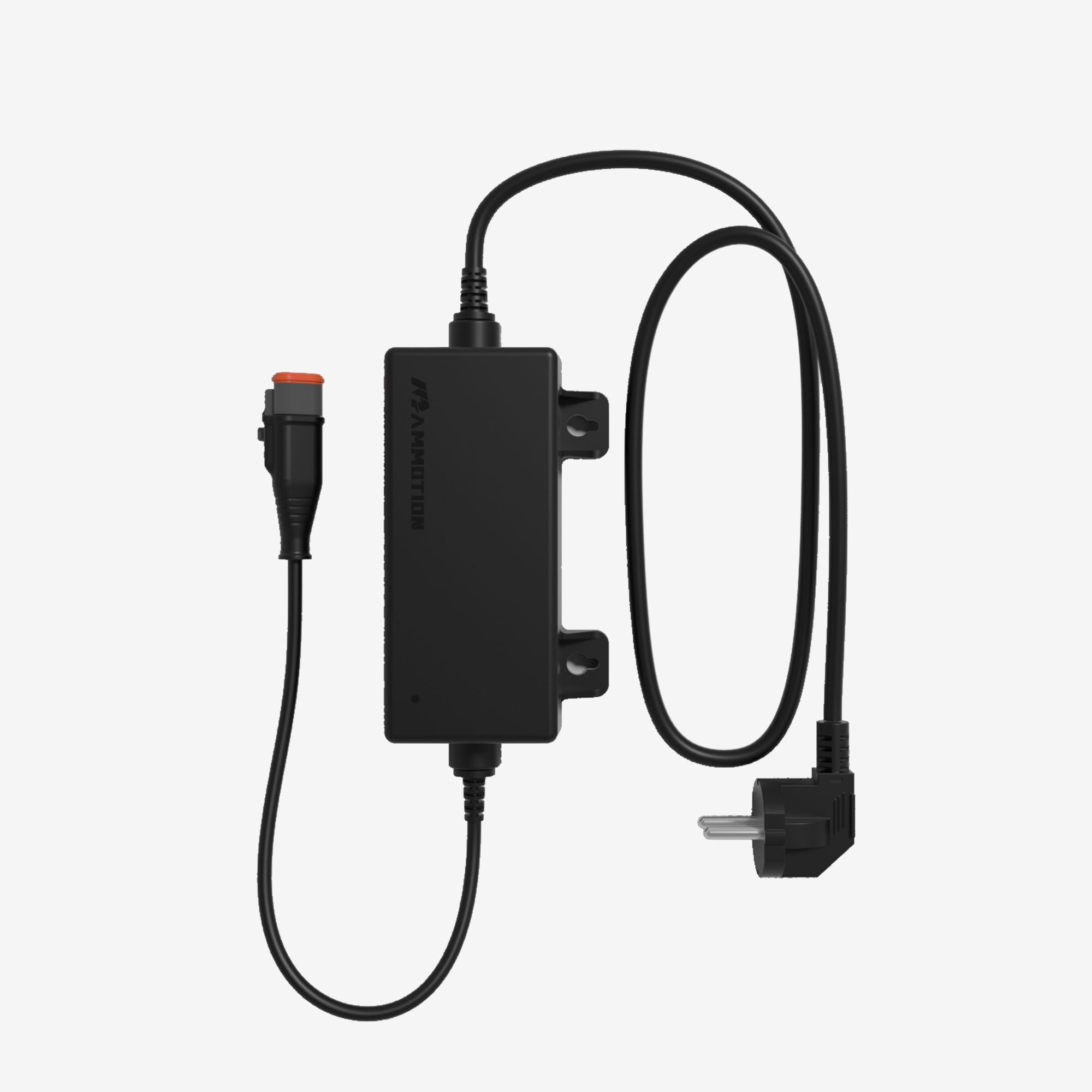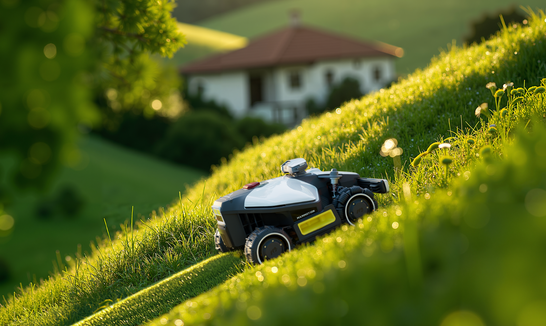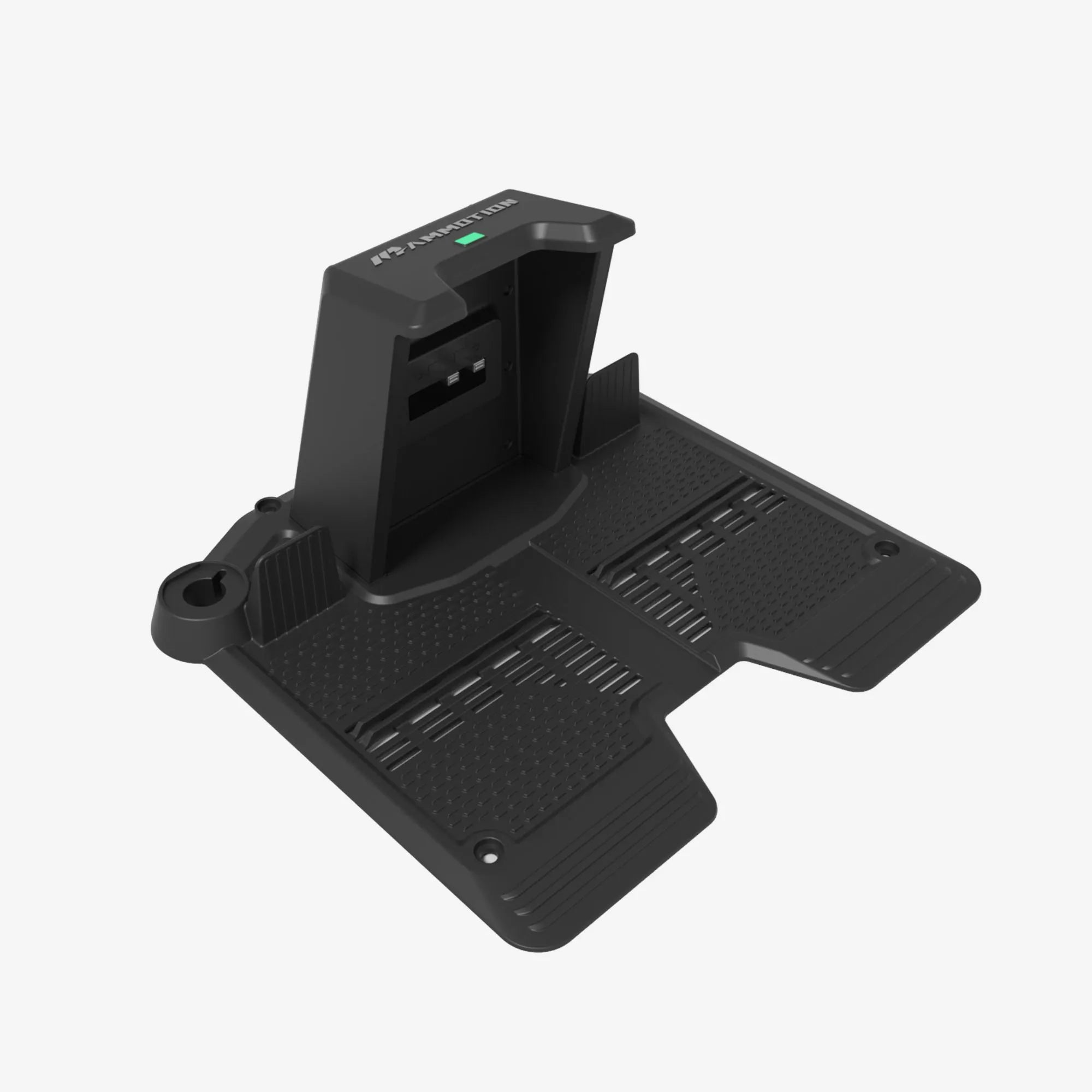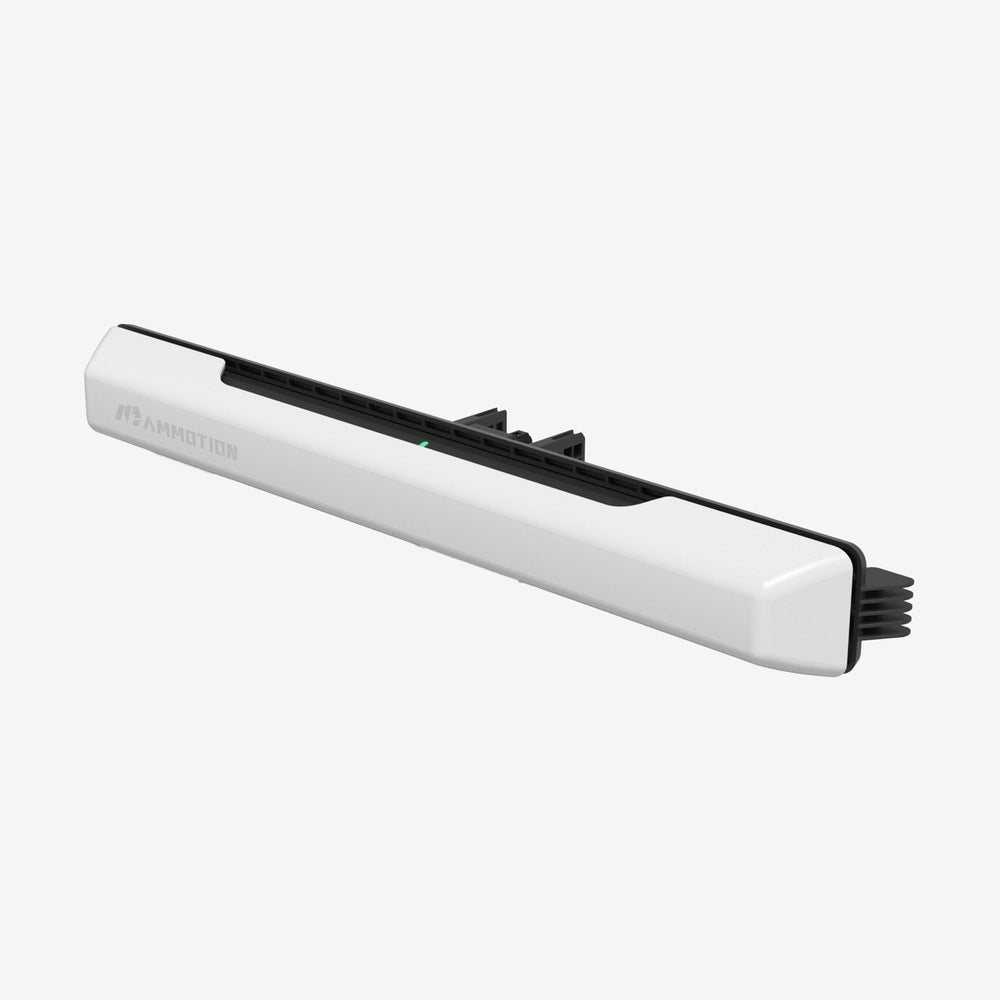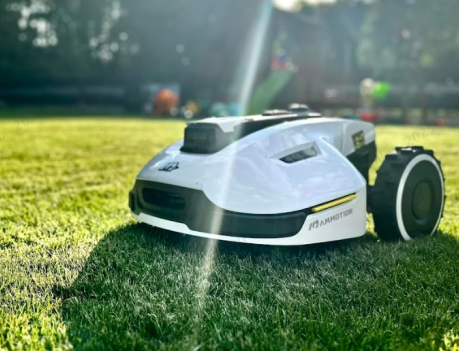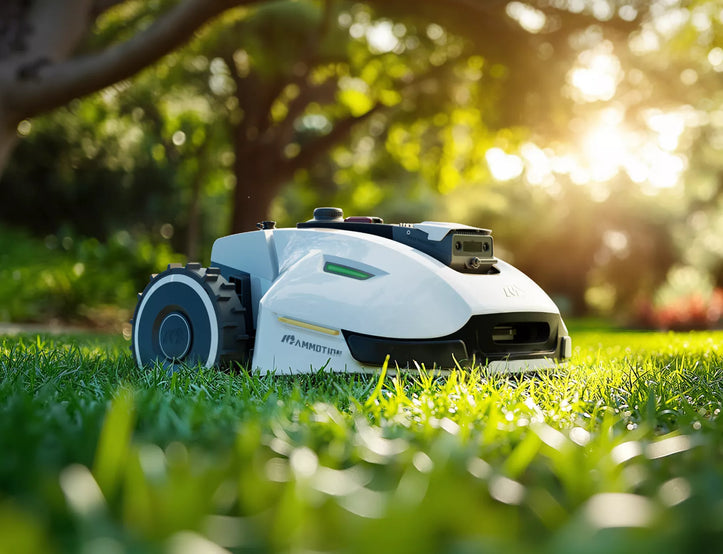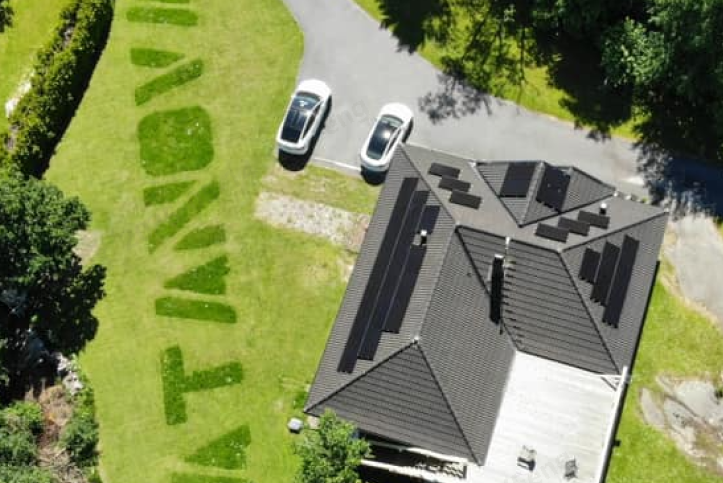Struggling with heavy, hard-to-push mowers? Battling uneven terrain or noisy machines that disturb the neighbors? Unsure which type—electric, petrol, cordless, or robotic—fits your garden and lifestyle? These common pain points can make mowing feel like a chore rather than a pleasure.
For many UK homeowners, choosing the best lawn mower for home isn’t just about cutting grass—it’s about avoiding frustration, saving time, and keeping your garden looking its best. This guide is designed to address these challenges, helping you to choose the best lawn mower for home use.
Part 1. What to Consider When Choosing Lawn Mower for Home Use
Unlike a commercial robotic lawn mower, a lawn mower for home use is built for smaller residential lawns, with lighter construction, narrower cutting widths, simpler controls, shorter runtime, moderate slope handling, and fewer advanced features; it prioritizes convenience, affordability, and easy maintenance for casual, occasional mowing.
1. Weight and Ease of Use
When selecting the best lawn mower for home use, one of the most important factors is weight and ease of use. Whether you have a small or medium-sized backyard, maintaining your lawn should be effortless and safe.
The weight of a lawn mower significantly affects how easy it is to push, especially for users with back or mobility issues. Generally, home electric mowers weighing under 15 kg are considered lightweight and easier to handle. Lighter machines reduce fatigue during mowing and improve control on uneven surfaces.
Key Factors for Ease of Use
- Lightweight Design – A mower around 8 kg can drastically reduce the effort needed for pushing and turning. Modern Gardens Magazine recommends a model at around 8.6 kg for its excellent maneuverability on small lawns. However, the weight requirement for lawnmower robots can reach 20KG, because the lawnmower operation is fully automated and requires no human intervention. The need to move the robot may occur during repairs or storage.
- Ergonomic Handles and Foldable Design – Comfortable grips and foldable handles make mowing more comfortable and storage easier.
- Self-Propelled or Assisted Drive – While adding some weight, self-propelled systems reduce effort on medium-sized lawns or slightly sloped terrain.
Practical Tips:
- For lawns smaller than 300 m² and flat terrain, choose a lightweight, non-self-propelled mower.
- For slightly larger lawns or minor slopes, consider a self-propelled mower, which can reduce effort even if the weight is higher.
User Insights:
Some UK homeowners on Reddit report that even “heavier” self-propelled mowers can feel difficult on wet or tall grass. This highlights that besides weight, factors like turf conditions, wheel traction, and handle ergonomics are equally important.
2. Battery Life
Battery life is a crucial factor when selecting the best lawn mower for home use, especially for cordless electric mowers. A mower with insufficient runtime can interrupt mowing sessions, forcing multiple charges and extending the time needed to maintain your lawn.
Understanding Battery Capacity:
Battery life is often measured in ampere-hours (Ah) or estimated runtime in minutes. For typical UK home gardens:
- Small lawns (<300 m²) generally require 20–30 minutes per charge.
- Medium lawns (300–600 m²) benefit from mowers offering 40–60 minutes of runtime.
- Large gardens (>600 m²) may require higher-capacity batteries or a spare battery to avoid mid-task interruptions.
Lithium-ion batteries are currently the most popular choice due to their lighter weight, consistent power output, and faster charging times. For example, the Bosch AdvancedRotak 36-660 offers a 36V lithium-ion battery with up to 60 minutes runtime, ideal for moderately sized gardens.
Practical Tips:
- Match Battery Life to Lawn Size – Ensure the battery can handle at least one full mowing session for your garden size.
- Consider Swap-and-Go Options – Some brands offer interchangeable batteries, allowing you to continue mowing while another battery charges.
- Monitor Charge Maintenance – Lithium-ion batteries perform best when not completely drained and are stored in cool, dry conditions.
User Insights:
Many UK homeowners prefer cordless mowers for their quiet operation and freedom of movement, but they often underestimate battery life requirements. Choosing a mower with slightly higher runtime than needed can prevent interruptions and reduce frustration.
3. Grass Cutting Quality & Terrain Adaptability
When choosing the best lawn mower for home use, the quality of the cut and the mower’s ability to handle different terrains are crucial. A smooth, even cut not only improves the visual appeal of your lawn but also promotes healthier grass growth.
3.1 Cutting Quality
A mower’s cutting quality depends on the blade type, motor power, and cutting height adjustability. High-quality rotary or dual-blade systems provide clean cuts and reduce scalping, which can damage grass roots. Adjustable cutting heights, typically ranging from 25 mm to 75 mm, allow you to adapt to grass type, growth stage, and seasonal conditions.
3.2 Terrain Adaptability
Home lawns often feature uneven patches, gentle slopes, or garden beds. Key considerations include:
- Wheel Design & Traction – Larger rear wheels and textured treads improve grip on slopes or wet grass.
- Self-Propelled or Assisted Drive – Helps push the mower across undulating surfaces with less effort.
- Lightweight & Maneuverable Models – Small electric mowers can easily navigate tight corners or terraced gardens.
Practical Tips:
- Match cutting height to grass type: shorter for fine lawns, taller for thicker or coarse grasses.
- Avoid mowing when the lawn is wet to prevent scalping and ensure even cuts.
- Consider robotic or self-propelled mowers for slightly uneven or sloped lawns to maintain consistent results.
User Insights:
UK homeowners frequently report that lightweight mowers are easy to handle but sometimes struggle on uneven ground. Self-propelled or robotic mowers, while more expensive, save time and maintain a professional-looking lawn.
4. Noise Levels
Noise is one of the most overlooked—but most important—factors when choosing the best lawn mower for home use. In quiet UK neighbourhoods, especially suburban or semi-detached areas, excessive mower noise can easily disturb neighbours and disrupt peaceful weekend mornings.
Traditional petrol mowers often produce between 85–100 dB, comparable to the sound of heavy traffic. Prolonged exposure can cause hearing discomfort and noise complaints. In contrast, modern cordless or electric mowers generally run between 65–75 dB, making them ideal for home use—quiet enough to mow without waking the family or annoying nearby residents.
Noise Comparison (Average Ranges):
| Type | Average Noise (dB) | Noise Level Comparison | Suitable For |
|---|---|---|---|
| Petrol Mower | 85–100 | Busy street / motorcycle | Large gardens, rough terrain |
| Electric Mower | 70–75 | Vacuum cleaner | Medium lawns |
| Cordless Mower | 65–70 | Normal conversation | Small–medium lawns |
| Robot Mower (e.g., Mammotion LUBA) | 55–60 | Quiet office | Any home garden |
Practical Tips to Reduce Noise:
- Choose electric or robotic mowers if you live in dense residential areas.
- Maintain blades and motors regularly—dull blades and worn bearings increase noise.
- Mow during considerate hours (e.g., after 9 a.m.) to stay courteous to neighbours.
User Insights:
- Many UK homeowners report that noise is a top factor influencing repeat purchases and neighbour relations. Common user observations include:
- Preference shift to cordless/robotic models: Users who switched from petrol to battery or robot mowers frequently cite reduced complaints and more flexible mowing times.
- Perception vs. spec: Even when a product spec lists ~70 dB, perceived noise can feel louder in enclosed gardens—users recommend trying demos or watching video reviews in a similar setting.
5. Maintenance & Upkeep
When it comes to choosing the best lawn mower for home use, maintenance and upkeep are often the deal-breakers. No one wants to spend their Sunday afternoon cleaning grass clippings or replacing clogged filters. The easier it is to maintain your mower, the longer it will last — and the more pleasant mowing becomes.
A well-maintained mower doesn’t just last longer; it also cuts grass more evenly, consumes less power or fuel, and avoids costly breakdowns. Regular upkeep ensures blades stay sharp, motors run smoothly, and batteries remain efficient. For home users who mow once every week or two, low-maintenance designs can make all the difference.
Maintenance Comparison Table
| Type | Maintenance Level | Common Tasks | Frequency | User-Friendliness |
|---|---|---|---|---|
| Petrol Mower | High | Oil changes, air filter cleaning, spark plug replacement | Every 10–20 hours | ★★☆☆☆ |
| Electric Mower | Low | Blade sharpening, cord check | Every 2–3 months | ★★★★☆ |
| Cordless Mower | Moderate | Battery charging, blade cleaning | Every 2–4 weeks | ★★★☆☆ |
| Robot Mower | Very Low | Occasional brush cleaning, software update | Every 2 months | ★★★★★ |
Practical Maintenance Tips
- Clean after every mow — Wipe off wet grass from blades and deck to prevent corrosion.
- Sharpen blades regularly — Dull blades tear grass, leading to uneven patches.
- Charge batteries properly — Avoid full discharge for longer battery lifespan.
- Follow seasonal storage rules — For winter, empty petrol tanks or remove batteries to prevent damage.
User Insights:
Many UK homeowners say maintenance is the most underestimated factor in long-term mower satisfaction. Common user experiences include:
- Transitioning from petrol to cordless or robotic mowers has saved users hours of post-mowing cleanup time.
- Battery maintenance concerns: Some users initially worried about short battery life but found modern lithium batteries (e.g., 60V models) last several seasons with minimal capacity loss.
For families or elderly homeowners, this “hands-free convenience” is often the key factor in choosing a mower.
6. Easy to Store
A bulky mower can quickly become a headache if you don’t have room to keep it safe from rain or frost. Compact, foldable, or wall-mountable designs are becoming increasingly popular among homeowners who want to save both time and space.
Storage Comparison Table
| Type | Foldable Handle | Compact Design | Storage Size | Best For |
|---|---|---|---|---|
| Petrol Mower | ✗ | ✗ | Large | Large gardens with garage space |
| Cordless Mower | ✓ | ✓ | Medium | Families with limited space |
| Electric Mower | ✓ | ✓ | Small–Medium | Flats or small houses |
| Hover Mower | ✓ | ✓ | Small | Terraced houses or minimal storage |
| Robot Mower | ✓ (charging dock only) | ✓ | Minimal | Homes wanting zero storage hassle |
User Insights:
Many UK users mention that storage convenience is one of the most underrated buying criteria. For those living in urban or suburban homes, storage space is often tight:
- Families with garages often prefer cordless models that can fold neatly and stand upright.
- Tech-savvy homeowners find robot mowers ideal since they require virtually no indoor storage.
Part 2: Future Insight: Robot Lawn Mower — The Best Lawn Mower for Home Use
The future of home lawn care is smart, effortless, and fully automated. For many UK homeowners, time is a precious resource — and mowing every week can quickly turn into a tiring, time-consuming routine. This is where robot lawn mowers come in, redefining what it means to have a perfectly maintained garden with minimal effort.
Zero Physical Effort
With a robot mower, there’s no need to push, pull, or carry anything heavy. Once it’s set up, it automatically navigates your lawn — even across slopes and uneven patches — giving you back hours of your weekend.
Smart AI Navigation & Precision Cutting
Models like the Mammotion LUBA 2 AWD use UltraSense AI Vision and advanced mapping algorithms to mow efficiently without needing boundary wires. They handle multi-zone gardens, avoid obstacles, and ensure an even cut every single time.
Perfect for All Lawn Types — Including Slopes
Unlike traditional mowers, robotic mowers can handle complex terrain. The LUBA 2 AWD, for example, can conquer slopes up to 80% (38.6°) — perfect for UK gardens with hilly or bumpy terrain.
Silent, Eco-Friendly Operation
Say goodbye to noisy Sunday mornings. Robotic mowers operate quietly, run on rechargeable batteries, and produce zero emissions — ideal for environmentally conscious homeowners.
Smart Connectivity & Scheduling
Through the Mammotion app, users can schedule mowing times, adjust cutting height, and monitor mowing progress remotely. The mower even returns to its charging dock automatically when its battery runs low. You can even use its 3D printing functions to design your lawn or garden.
Part 3. Why Mammotion Robot Lawn Mowers Stand out
When you’re searching for the best lawn mower for home, one question stands out: why choose a robot lawn mower over traditional models? For many UK homeowners, robot mowers from Mammotion offer clear advantages—especially in convenience, terrain handling and smart functionality.
Mammotion offers lawnmower models suitable for different types of gardens. Furthermore, it features industry-leading UltraSense AI Vision + NetRTK/RTK technology to help you mow efficiently and precisely, while being easy to use and low-maintenance.
While the upfront cost is higher than many budget mowers, the long-term value is substantial. Time saved, fewer physical demands, reduced fuel/maintenance costs—and a healthier, well-looked-after lawn—make it a worthwhile investment.
What’s more, if you have a garden divided into front & back lawns, a side plot, a greenhouse area, or segmented spaces, the robot can manage each separately rather than treating the entire property as one homogeneous area. Mammotion LUBA 2 AWD 10000 model can handle up to 60 separate zones.
| Model | Max Mowing Area | Cutting Height | Mowing Time per Charge | Size (Max: Net Weight) | Drive System | Best For |
|---|---|---|---|---|---|---|
| Mammotion LUBA 2 AWD | Up to approx. 6,000 m² | 25-70 mm | 190 min | 18.6 kg | All-Wheel-Drive (AWD) | Large estates, steep slopes, complex multi-zone lawns |
| Mammotion LUBA mini AWD | Up to approx. 1,800 m² | 25-65 mm | 165 min | 15 kg | All-Wheel-Drive (AWD) | Medium gardens with slopes, tighter layouts |
| Mammotion YUKA | Up to approx. 4,000 m² | 20-90 mm | 130 min | 17.2 kg | Two-wheel drive | Typical suburban lawns, moderate terrain |
| Mammotion YUKA mini | Up to approx. 1,200 m² | 20-60 mm | 120 min | 10.6 kg | Two-wheel drive | Compact gardens, terraces, smaller outdoor spaces |
Conclusion
From cordless electric and hover mowers that suit smaller flats and terraced gardens, to powerful self‑propelled petrol models for rougher terrain, and the next‑gen robot mowers like the Mammotion LUBA and YUKA series ideal for full automation—there’s a solution for every home. In particular, if you’re seeking minimal effort, quiet operation and smart control, a robot mower becomes a compelling choice for modern homeowners.
So if you want a lawn machine that delivers consistent results, saves time, reduces noise and lets you enjoy your garden rather than working on it—choosing the right mower is key. With that in mind, and understanding your needs clearly, you’re well on your way to finding the best lawn mower for home use.
Frequently Asked Questions
1. Are robotic lawn mowers suitable for all types of home gardens?
Yes, robotic lawn mowers like Mammotion YUKA and LUBA series are designed to handle different garden types, including slopes, uneven terrain, and multi-zone areas. They are especially ideal for homeowners looking for an automated, hassle-free mowing experience.
2. What are the advantages of cordless lawn mowers for home use?
Cordless lawn mowers are lightweight, quiet, and eco-friendly, making them perfect for small to medium-sized home gardens. Their battery life may limit mowing time, so they are best for lawns that can be cut in a single charge.
3. How often should I maintain my home lawn mower?
Maintenance frequency depends on mower type and usage. Electric and cordless mowers require less frequent servicing, while petrol mowers need regular oil changes, blade sharpening, and air filter cleaning. Robot lawn mowers require occasional sensor and blade checks.
4. Can a lawn mower for home use handle steep slopes or uneven ground?
Some mowers, particularly self-propelled petrol models and robot mowers with AWD, are designed for uneven lawns and gentle slopes. For steep hills, robot lawn mowers for home use like Mammotion LUBA AWD are recommended for safe and efficient mowing.
5. Is a hover mower suitable for home gardens?
Hover mowers are lightweight and easy to maneuver, making them ideal for small, flat lawns or terraced gardens. However, they may not perform well on rough or sloped terrain compared to self-propelled or robotic options.
6. How noisy are lawn mowers for home use?
Electric and cordless mowers are significantly quieter than petrol mowers, making them better suited for residential areas. Robot lawn mowers are typically the quietest, allowing you to mow your garden without disturbing neighbors.
7. Can I leave a robot lawn mower running while I am away?
Yes, robot lawn mowers for home use, such as the Mammotion YUKA or LUBA series, are designed for fully automated operation. They can mow your lawn safely without supervision, following programmed schedules and navigation patterns.


